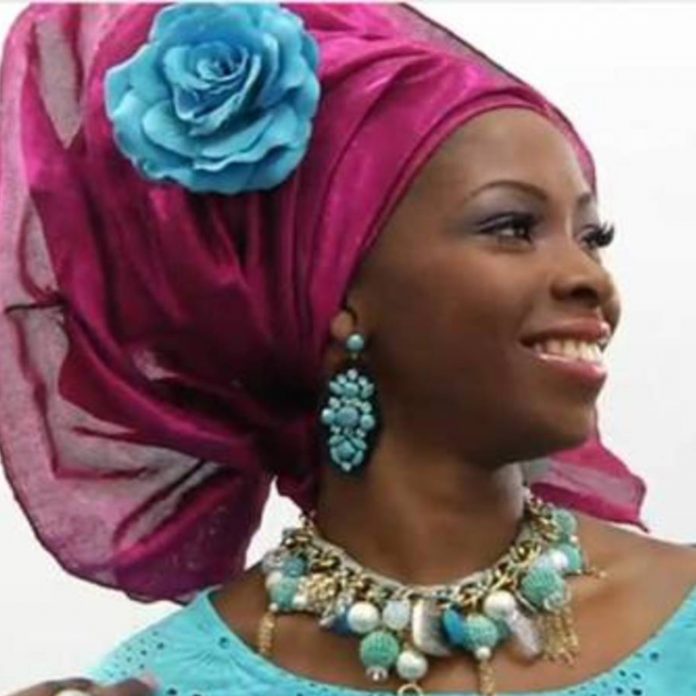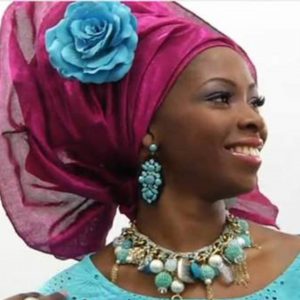Gele
By Deborah Ayomide Agboola
Fashion is a form of self-expression with a specific context, such as time, place and purpose, example of these are clothing, footwear, lifestyle, accessories, makeup, hairstyle, and headwear.
An Englishman living in Paris, Charles Frederick Worth (1825 – 1905) is regarded as the first designer in the modern sense of the term, with a large business employing many largely anonymous tailors and seamstresses.
The headwear industry in Nigeria has seen significant changes over the past few decades, reflecting broader social and cultural shifts in the country. Headgear came in different sizes and styles, it can also be called headwear, the styles vary according to culture.
In the Yoruba culture, the head wear is called gele for the women and Abeti Aja or fila for the men , the gele has been a symbol of traditional Nigerian fashion for centuries, but it has undergone some significant changes in recent decades. In the past, the gele was typically made from a stiff fabric that was difficult to work with, but today, more flexible fabrics are often used.
The gele is a very important part of Nigerian women’s fashion, and has a long history of cultural and social significance. The gele is seen as a sign of femininity, beauty, and respect. It is typically worn to formal events, such as weddings and parties, but can also be worn in more casual settings. It’s also seen as a way to express one’s personality and sense of style.
Social media platforms like Instagram and YouTube have allowed people to share their gele styles with a wider audience, and have led to the rise of the “Instagram gele.” This is a style of gele that is heavily influenced by Western fashion trends, and is often paired with more modern outfits. It has also been embraced by celebrities and social media influencers, who have helped to spread the trend.
“Fila,” is a type of hat made from woven straw. The fila is usually worn over a “agbada,” which is a traditional attire worn by men. The agbada is usually colorful and decorated with patterns. The fila and agbada are important symbols of cultural identity and pride for the Yoruba people of Nigeria. The fila is seen as a sign of respect and dignity, and is often worn on special occasions. The agbada is a symbol of status and wealth, and is typically only worn by men of high social standing.
In recent years, the fila and agbada have been modernized in a few ways. For example, the fila has been made in new colors and styles, and is sometimes embellished with beads or other decorations. The agbada has also been modernized, with new patterns and styles that incorporate both traditional and modern elements. Many men now wear the fila and agbada in more casual settings, rather than just on special occasions.
There are several traditional Igbo headwear styles, including the Okpu agu, which is worn by men, and the Igbo gele, which is worn by women. The Okpu agu is a traditional cap worn by men in the Igbo culture. The cap is typically made from cloth or leather, and it can be decorated with beads, cowries, or feathers. It is thought to have originated in the 18th century, and it was traditionally worn by Igbo leaders and elders. The Okpu agu is a symbol of status and respect, and it is often worn at important ceremonies and events. The significance of the materials and decorations used on the Okpu agu for example, the cowries are thought to represent wealth and abundance, and the feathers are said to represent prestige and honor.
In recent years, the Okpu agu has been modernized in a number of ways. For example, the cap has been adapted into different styles and sizes, and it is now available in a variety of colors and designs. In addition, it is often now made from synthetic materials rather than traditional materials. Some people also now wear the Okpu agu with modern clothes, such as suits or jeans.
There is a traditional head wrap worn by women in the Igbo culture. It is typically made from a large piece of cloth that is wrapped around the head, and it is often brightly colored and patterned. The Igbo gele has also been modernized in recent years. It is now often made from synthetic fabrics, and it is available in a variety of colors and patterns. In addition, many women now wear the Igbo gele with Western-style clothing, such as dre.
It is seen as a symbol of femininity and beauty, and it is often considered an important part of a woman’s outfit. Some women even believe that the Igbo gele can bring good luck and protection.
The Hausa people, who live in northern Nigeria and other parts of West Africa, have a traditional headdress called the Hausa cap. It is made from cotton or wool, and it is typically worn by men. The Hausa cap can be plain or decorated with embroidery or other embellishments. It is also sometimes worn with a turban. The Hausa cap has both religious and cultural significance. It is seen as a symbol of respect and it is often worn by Muslim men during prayer and other religious ceremonies. The Hausa cap also has a political significance, and it is often worn by politicians and leaders.
The Fulani people are a nomadic ethnic group who live throughout West Africa, including Nigeria. They have a traditional headdress called the Sokoto, which is made from colorful cloth and is tied in a distinctive style. The Sokoto is often decorated with beads, cowrie shells, or other adornments.
The Hausa cap has also been modernized in recent years. For example, many modern Hausa caps are made from synthetic materials, and they often feature bright colors and patterns. In addition, the Hausa cap has been adapted for use in fashion and everyday wear. Many people now wear Hausa caps as a fashion statement or to show their cultural pride.



